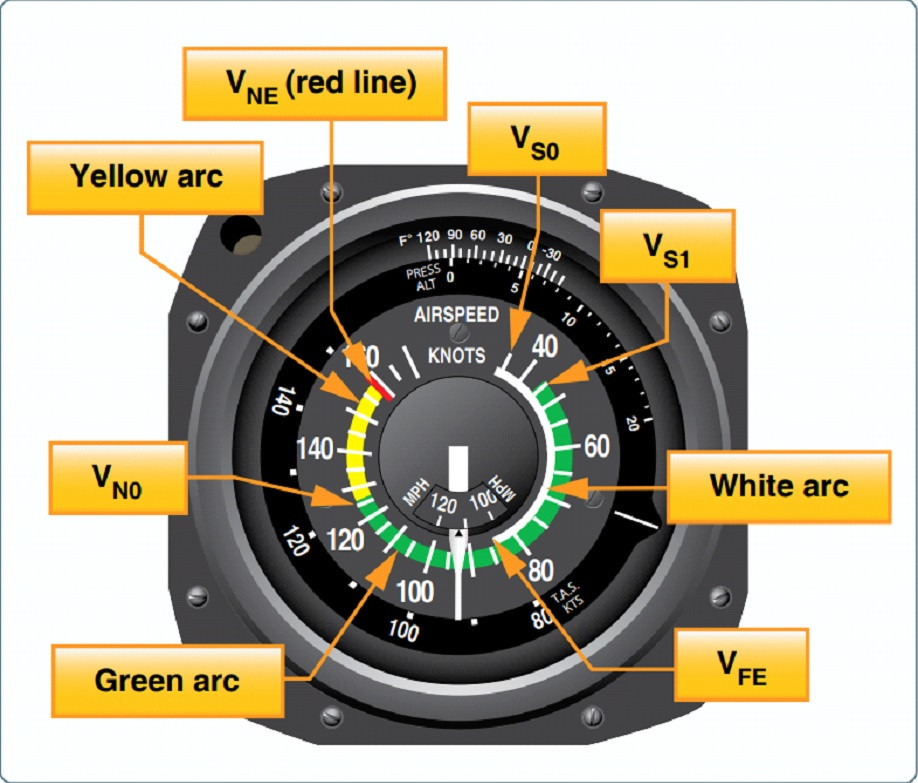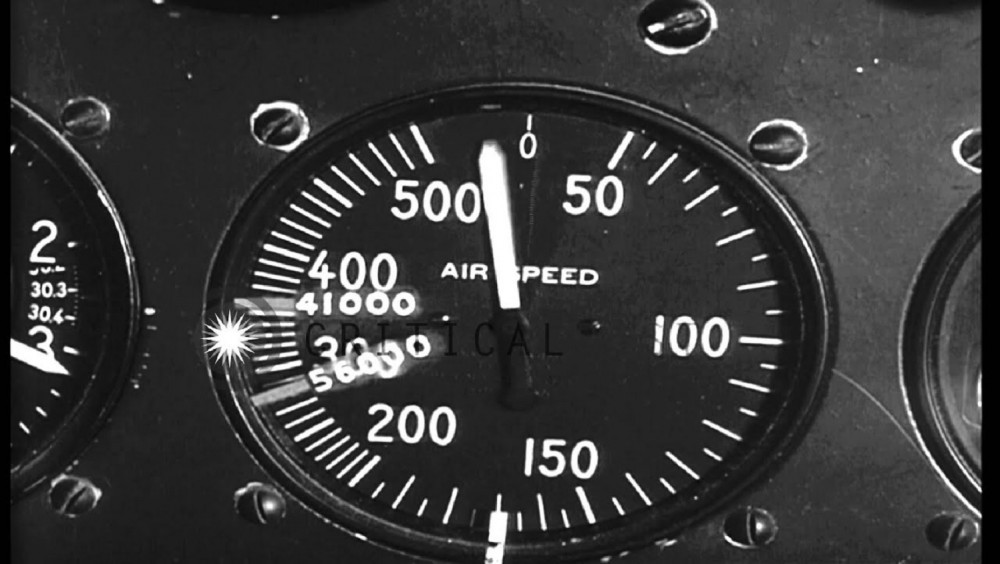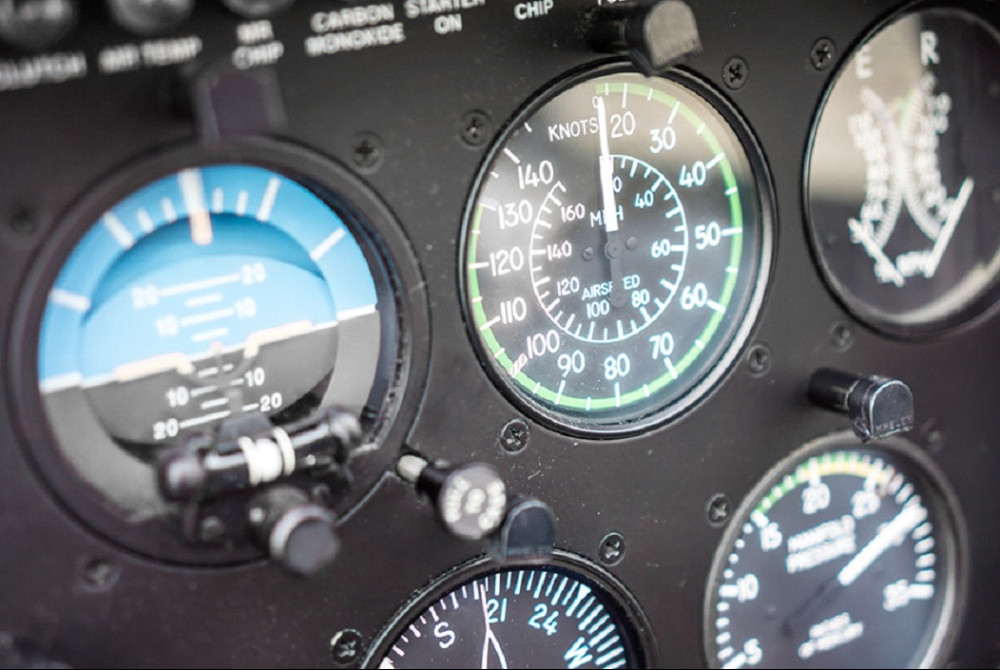Aircraft Speed Indicator – The Science Behind Measuring an Aircraft’s Speed Through the Air:

The airspeed indicator is almost certainly one to pay close attention to, even if all the indicators in the cockpit are crucial. Simply put, an airplane cannot fly without sufficient airspeed. Today, we will discuss what an airspeed indicator is, how it functions, and some crucial points to be aware of. There are a few things to keep in mind that are important with airspeed indicators.
The principal tool for measuring how quickly the aircraft is moving through the air is the airspeed indicator. It has a numerical scale with knots typically as the units. It gathers data on air pressure from two sources, measures the difference between the two, and displays the information as “airspeed.”
Read on to find out more about how it functions.
An airspeed indicator is what?

A calibrated barometer is what an airspeed indicator actually is. Air pressure is what it truly measures, even if its output is data known as “airspeed.”
The flight deck’s “six-pack” of pilot instrumentation includes the airspeed indicator. The airspeed dial is often located in the upper left corner of the instrument panel in a cockpit.
During the flight, the airspeed indicator is frequently used. Lift is a function of airspeed, hence maintaining airspeed is essential if you want the airplane to continue flying, according to general principles of flight.
From takeoff through the last seconds of touchdown, pilots will use the airspeed indicator. It is important to pay attention to this instrument at all times because flying too fast or slowly can both be hazardous.
Here is the general operating concept for the components of the airspeed indicators.
The Operation of an Airspeed Indicator:

The airspeed indicator measures air pressure, as we mentioned in the beginning. It is linked to a device known as the “pitot static” system. Air can enter (and exit) the instruments through this system of hollow tubes.
The two “feeds” that the airspeed indicator has been both extremely crucial: –
The static system, or ambient air, is what this system uses to take in the air that is “at rest.”
The Pitot System is made to collect “dynamic” air, or air that is moving. Ram air is another name for this.
The static port is typically found in a location with comparatively undisturbed airflow, like on an aircraft’s side (or even in the cockpit). ‘Probes’ for the pitot system typically resemble tiny drinking straws facing forward.
The basic operation of an airspeed indicator will be familiar to you if you’ve ever stuck your hand out of a moving automobile window. You would be a living airspeed indicator if you were able to “calibrate” your arm to gauge the force!
Similar systems exist on airplanes, but you don’t use your arm.
When air that is in motion is stopped, a force is produced. Through a pitot tube, which is brought to rest against a diaphragm, the moving air enters the instrument. The diaphragm moves more when there is a stronger airflow (caused by faster airflow).
Through a few extremely small gears known as “sectors” and “pinions,” the diaphragm is connected to a needle on the face of the airspeed indicator. These are calibrated to move a specific amount in accordance with the movement of the diaphragm.
We can obtain a highly precise indicator of our speed through the air since the gears and diaphragm are set to generate a certain reaction at a specific ram air pressure.
Why is the input static?
It’s very easy. The static source offers a “datum” against which the airspeed in the ram air is measured. To compare dynamic pressure from the altitude you were flying at to static air taken at a different altitude would be absurd. Your reading would be incorrect!
How to Interpret an Airspeed Display:

In theory, reading an airspeed indicator is rather straightforward.
There are numbers all the way around the dial. These figures represent “knots.” otherwise known as “nautical miles per hour.” In analog systems, there will only be one needle, which is typically white. Your airspeed is the number that your needle is pointing at.
But Reading a number is not all there is to understanding airspeed. You’ll undoubtedly notice numerous different colored “bands” when looking at the instrument. All of these have significance and are crucial for a safe flight.
These are known as “V” Speeds (there are actually a number of them), and they frequently match the information in the pilot’s operating manual.
The Importance of an Airspeed Indicator:
For continuing and sustained flying, airspeed is essential. Here are some factors that make it a crucial component of the “six-pack”: –
Stall Rate:
To produce lift, airplanes require a steady airflow over their wings. The weight of the aircraft will surpass the lift generated if the speed of the aircraft falls below a predetermined level (known as VSO, or the “stall speed”).
As a result, the aircraft experiences a “stall,” in which it ceases to fly and begins to literally “fall.”
If you look at the table above, you’ll see that the stall speeds for two of the arcs—green and white—are different.
Why is that so?
In layman’s terms, this occurs because the airplane can fly slower before stalling when the flaps are extended since they produce greater lift. Check out our article on wing parts here to learn a little more about flaps.
The landing gear (or “wheels,” if you prefer) and flaps stick out into the air and are supported by struts or hinges because they move. These struts and hinges aren’t quite as durable as the fixed sections of the air frame and can break under excessive stress.
Navigation:
When cross-country flying, navigating and determining your location are really just a matter of multiplying your speed by the distance you have travelled.
And what was just said has a hint. You definitely need to be aware of your flying speed in order to effectively navigate. An essential tool for doing this is an airspeed indicator.
Maneuvering:
It wouldn’t be safe (or comfortable) to turn 90 degrees when travelling at a fast speed while riding a bicycle, and the same logic holds true for aircraft.
The aircraft could travel very quickly in a straight line, but even fighter jets have limits on the fastest turns they can make in order to protect the air frame.
The maximum number of “G’s” (a multiple of the force of gravity) that most airplanes can safely handle is determined by their structural design. When the airplane is flying swiftly, this tends to rise because of inertia.
Simply put, if you move too quickly and forcefully, you risk “pulling the wings off.” The simplest defense against this is to draw a sharp red line—known as the “VNE”—that must never be crossed.
Conclusion:
One of the most important tools on a plane is the airspeed indicator. One of the essentials for safe flight is airspeed. You’ll be able to fly more safely, navigate more effectively, and make sure you’re operating the aircraft in accordance with the manufacturer’s instructions if you comprehend what this instrument is telling you and how it operates.
Hope you’ve enjoyed reading this article and feel free to share your thoughts in comments below.
See you soon in the next article.

I would want to express my gratitude to you for writing this insightful and comprehensive piece about the airplane speed indicator. This is actually a very significant post that needs to be read. In addition, I didn’t have a lot of prior expertise on the subject. But reading your post provided me with a wealth of information on the subject. Keep publishing like this. I most certainly will share this.
Thank you for the feedback and thanks for visiting my website.